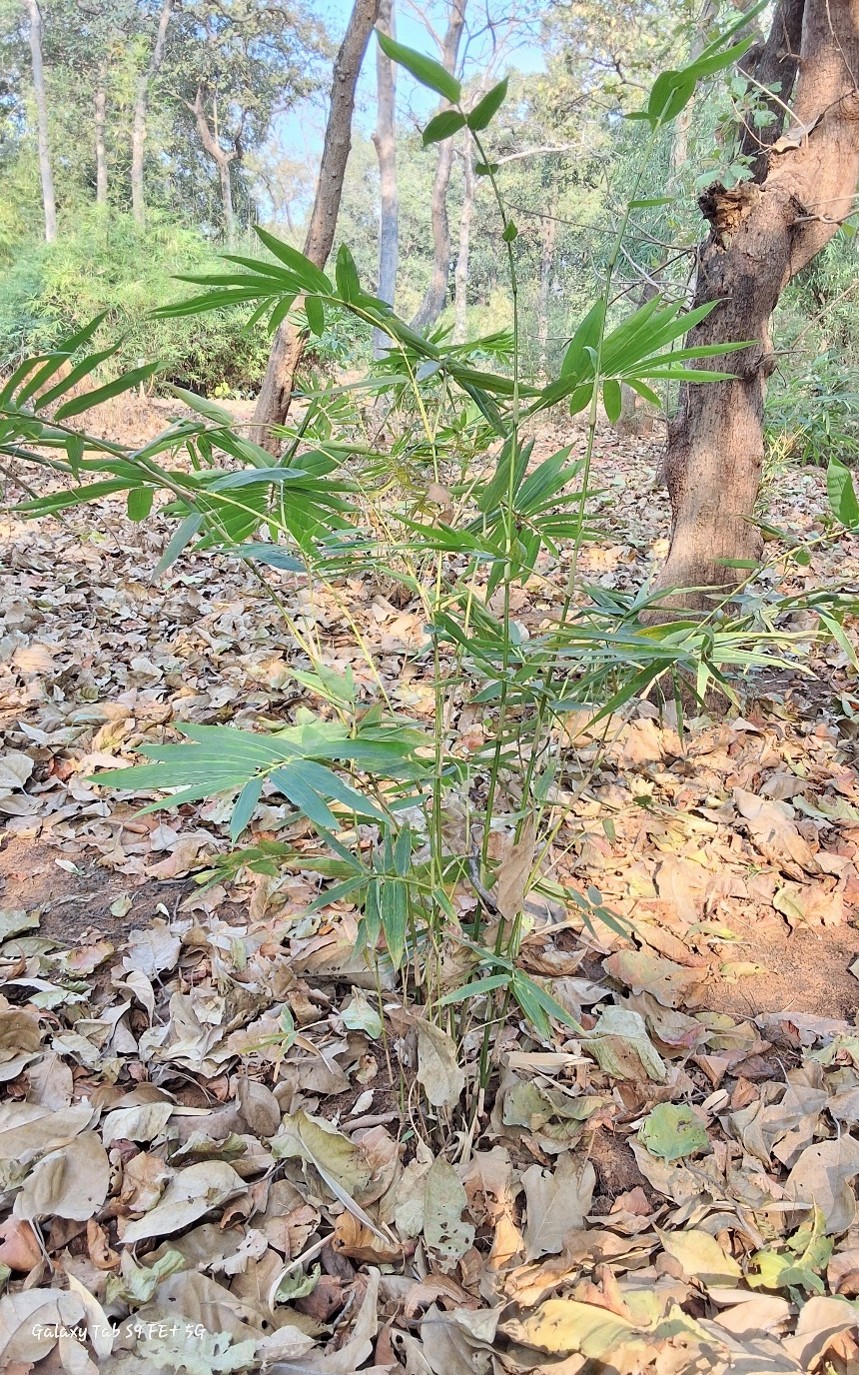Oxytenanthera abyssinica

Oxytenanthera abyssinica
Oxytenanthera abyssinica also known as Ethiopian Bamboo in English, is commonly referred to as T'ena Shembi in Amharic and Mufindi in Swahili. Native to Ethiopia, it is found primarily in central and eastern Africa, with significant populations in tropical and subtropical forest regions. This bamboo thrives in moist, well-drained areas, often along rivers and in valleys, at altitudes ranging from 1,000 to 2,500 meters above sea level. While it is native to Ethiopia, it has been introduced to some regions of East Africa and India.
The plant has a clumping habit, exhibiting a medium to dense growth pattern. Its culms can grow between 6 and 12 meters in height, with a diameter ranging from 4 to 8 cm. The culms are light green to yellowish-green, and their internodes measure between 20 and 40 cm. The culm sheaths are green when young and turn yellowish with age. The adaxial surface is glabrous, while the abaxial surface is covered with soft hairs, and the margins of the sheaths are ciliate.
The leaves of Oxytenanthera abyssinica are lanceolate with slightly curved edges and pointed tips, measuring 15 to 30 cm in length and 2 to 5 cm in breadth. The leaves are soft, smooth, and often have a slight glossy finish.
This bamboo species produces a large, dense, and compact panicle-like inflorescence, with numerous spikelets. The flowering glumes are small and have bristles along the margins. The stamens are exserted with long anthers. Oxytenanthera abyssinica flowers only once every 35 to 50 years, with flowering intervals reported in various parts of Ethiopia.
The seeds of this bamboo are small and lightweight, dispersed by wind. However, seed germination is slow and typically requires high humidity and warm conditions. The most common method of propagation is through culm cuttings, which sprout quickly when planted. Clump division is also used for propagation, but seed propagation is rare due to the slow germination rate.
The uses of Oxytenanthera abyssinica are diverse. It is widely employed in construction, where it is used for building houses, fences, and scaffolding. The bamboo is also highly valued in crafting, particularly for making baskets, mats, and other handicrafts. Its fibers are suitable for pulp and paper production. In addition, it plays a crucial role in erosion control, often being planted along riverbanks to prevent soil erosion. Furthermore, it serves as a valuable source of fuel wood, particularly in rural communities.
In summary, Oxytenanthera abyssinica is a versatile and resilient bamboo species with numerous applications in construction, crafting, paper production, and environmental conservation, making it an important resource in the regions where it grows.
Listen Audio:
Need assistance? BRTC Faculty